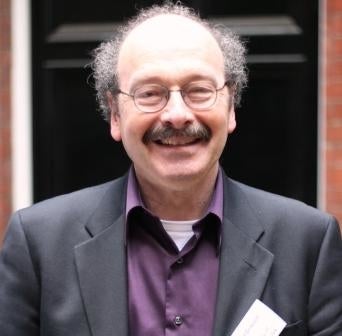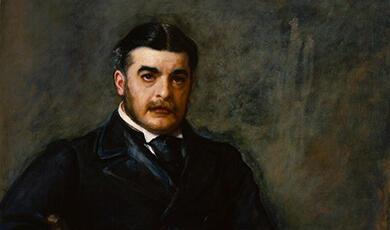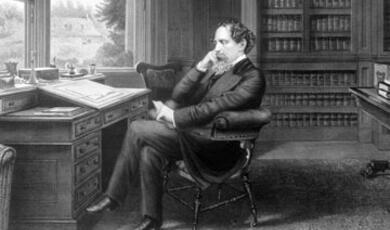Debussy - Text and Ideas: Reflections on the new edition of Pelléas
Share
- Details
- Transcript
- Audio
- Downloads
- Extra Reading
Critical editing must of necessity concern itself with facts, many thousands of them, but the edition that is its object must be based on an understanding of the work itself, an understanding that may evolve during the editorial process. In this lecture, Professor David Grayson discusses some of the insights gained from preparing a critical edition of Pelléas.
Download Transcript
12 April 2012
Reflections on the
New Edition of Pelléas
David Grayson
The last time that I saw Nadia Boulanger I told her that I was in Paris to begin work on my doctoral dissertation on Debussy's Pelléas et Mélisande. "Have you memorized it?" she asked. This was one of her maddening traits as a teacher: reminding us of what we should and could do, if only we had the necessary will and discipline. I confessed that I hadn't (and alas, I still haven't), so after an appropriately long Debussyan silence, during which she gave me time to ponder my shortcomings, we moved on to other things. What she was curious to learn was what music I had heard recently, meaning, I was to discover, new music. When I told her that I had just seen Massenet's Werther at the Paris Opéra she was positively dismayed. I had disappointed her once again.
No matter how well one knows a work, it is a risky proposition to rely on memory when making a critical edition, especially of a long and complex work like Pelléas, which had such a complicated and protracted genesis and for which there are a great many surviving sources associated with numerous editions and numerous performances supervised by the composer. Details and variants need to be documented and controlled, many more than will eventually be listed in the critical notes. There the editor will offer, not everything he has discovered, no matter how interesting it may seem to him, but what he thinks the score's users will need to know.
Debussy would not have disappointed Mlle. Boulanger. While he was composing Pelléas, he had evidently memorized his libretto, which is to say, the Maeterlinck play from which he drew his text. We may infer as much from his preliminary sketches, in which the vocal melodies are for the most part written without their sung texts. (See, for example, the preliminary draft of the opening of Act V in Fig. 1.) And when I claim that he memorized the play, rather than the cut version of it that he fashioned into his libretto, it is because the first draft of the first scene that he composed (his Act IV, scene 4) included every word of the play. Or nearly every word. The exceptions, as they say, prove the rule, as only two words were changed. When Pelléas says, "On est triste, souvent, quand on s'aime…" ("One is sad often when one loves..."), Mélisande readily agrees, and with characteristic overstatement, so strong is her impulse to please, she replies, "Je pleure toujours lorsque je songe à toi…" ("I weep always when I think of you…"). Here Debussy changed "songe" to "pense", a subtle switch that leaves the translation unaltered. Perhaps the difference is between "thinking about" and "thinking of". Then, later in the scene, after Pelléas and Mélisande become aware that Golaud has seen them kissing, Pelléas comments, "Il restera là tant qu'il croira que nous ne savons pas…" ("He will remain there as long as he thinks we do not know…"). Debussy changed "savons" to "voyons", "know" to "see": "He will remain there as long as he thinks we do not see…" Those who know the opera by heart also know that neither line is in the final version of the opera. So we can only guess whether his alterations were deliberate or unintended, a consequence of faulty memory. Sigmund Freud, of course, would argue that even if accidental, they were intended. There are, however, examples elsewhere in the sketch drafts where a word substitution, typically by a synonym, was subsequently reversed, or corrected, with Maeterlinck's original text restored.
Nevertheless, a few errors did creep into the sung text of the vocal score. I will not speak here of the far more egregious mistakes in the published full score, which contained such absurdities as replacing "le mur" (the wall) with "la mer" (the sea) and thus having the willow branches hang over the sea rather than over the wall; or replacing "vos cheveux" with "vous" and thus having Mélisande (and unnamed others) dive into the well rather than having her hair dip into it! Once I was persuaded that Debussy had made an error rather than a revision, the mistake was easily fixed—provided the correct word contained the same number of syllables as the wrong one. For example, when Golaud speaks of the gloomy country, he means to refer to "all its forests, all its old forests without light", not "all these forests", though, in this case the difference is inaudible to listeners, since it involves the French homonyms "ses" and "ces". Also, after Pelléas has been handling Mélisande's tresses, he means to say that he "can no longer hold them with both hands", not that he "cannot hold them with both hands": "ne … plus" instead of "ne … pas". One of the more worrisome of such situations comes during the love duet scene, when Pelléas describes how he sought beauty throughout the house and throughout the country. In the play he then says, "Et maintenant je t'ai trouvé!... Je t'ai trouvée!..." ("And now I have found you!... I have found you!..."). And so the lines appear in every one of Debussy's manuscripts. But in every printed source it is "Et maintenant je t'ai trouvé!... Je l'ai trouvée!..." ("And now I have found you!... I have found it!..."), referring first to Mélisande and then to the beauty that he had sought. Given the source situation, it might be tempting to restore Maeterlinck's text, yet even if the reading in the printed scores originated in a misprint, it is impossible to imagine that Debussy would not have noticed and corrected it, had he wished to do so. I therefore felt that I had to let it stand.
Another of Debussy's word substitution is problematic because the restoration of what I consider to be the correct text removes a syllable and therefore a musical note. After Mélisande has lost her wedding ring in Blind Men's Well, Pelléas tries to make light of her apparently accidental, yet symbolic severing of her marital ties to Golaud: "Ce n'est rien…" ("It is nothing," he says). He then comments rather unrealistically, "nous la retrouverons peut-être." ("We shall recover it, perhaps."), before adding suggestively, "Ou bien nous en trouverons une autre…" ("Or else we will find another…"), the "other" being the ring that Pelléas imagines he might offer her. She, in turn, understands the seriousness of the loss and, while echoing his words, deflects his veiled hope for one particular found ring by referring in the plural to the rings they will never find: "Non, non; nous ne la retrouverons plus, nous n'en trouverons d'autres non plus…" ("No, no; we shall never recover it; we shall never find any others either…"). In Pelléas's lines, but not in Mélisande's, Debussy failed to preserve the distinction between recovering and finding, as he used the word "retrouverons" ("recover") twice. Especially in view of the parallels between their two speeches, a correction of the score seems in order, though it involves the loss of one syllable and therefore a minor revision to the melodic line.
Although Debussy may have aspired to make his libretto true to his text source, he was dealing with a moving target, since Maeterlinck published two revisions of his play during the nine years between 1893, when Debussy began composing the opera, and 1902, when the vocal score was published. Debussy drew his libretto primarily from the original 1892 edition of the play, even retaining Mélisande's original song from the tower, "Mes longs cheveux," rather than "Les trois soeurs aveugles," the song with which Maeterlinck replaced it for the stage première and in subsequent editions of the play. Debussy did, in fact, adopt some readings from these subsequent editions, but not enough, apparently, to please the playwright. In anticipation of the opera's première, Maeterlinck protested the production. In a letter to Le Figaro (13 April 1902) he complained that he had been denied his "legitimate" right to have his choice of singer for the role of Mélisande, that is to say, his mistress, Georgette Leblanc. But he also attacked Debussy's libretto, which, he charged, had treated his play cavalierly: "Arbitrary and absurd cuts have been imposed which have rendered it incomprehensible: [material] has been kept that I intended to suppress or improve, as I have done in the edition that has just been published, in which it can be seen how much the text adopted by the Opéra-Comique differs from the authentic text. In a word, the Pelléas in question is a play that has become foreign to me, almost inimical; and, stripped of all control over my work, I am reduced to wishing that its failure will be prompt and resounding."
In any other circumstances, one might have some sympathy for an author who had just undertaken an extensive revision of an early work, only to be reminded through public performances of "flaws" that he had just weeded out. But Maeterlinck could hardly have expected Debussy, at this late stage, to make anything more than a few gestures towards incorporating his quite recent revisions—which he did. Here is one such instance: At the end of Act I, Pelléas offers to guide Mélisande down the steep path to the castle, saying, "Voulez-vous me donner la main?" ("Will you give me your hand?"), perhaps a subconscious request for her hand in marriage. Mélisande's response, in the original version of the play and in Debussy's original setting, was to decline this offer, saying, "Voyez, voyez, j'ai les mains pleines…" ("See, see, my hands are full…"). Her hands were full both literally and figuratively, in that she was already married. In revising the play, Maeterlinck extended her line to "j'ai les mains pleines de fleurs et de feuillages…", thus making explicit her pretext for not offering her hand to Pelléas by indicating that she was holding flowers and foliage. This textual revision made its first appearance in Maeterlinck's 1898 edition of the play, but Debussy decided to add it only after the vocal score had already been engraved. He was thus able to squeeze in only a portion of the added text—"de fleurs"—as a more extensive insertion would have required more substantial re-engraving. The relevant portion of the corrected proofs, reproduced in Fig. 2, shows that "de fleurs" was added after these proofs had already been corrected as the addition is neither very clearly entered, nor is it signaled in the margin. These proofs belonged to Jean Perier, who was singing the role of Pelléas, and the change in Mélisande's part was roughly sketched in for his benefit, so he would know what to listen for.
It was not Debussy's fault that so many years intervened between his initial completion of the opera and its première, or that Maeterlinck was to become dissatisfied with his original play—twice. By any reasonable standard, Debussy was exceptionally faithful to his text source, and his care even extended to the play's punctuation—sometimes. Evidence of his concern over preserving it is found in the short score of Act 3: at one point he went through the entire act, methodically supplying all missing punctuation with a black pencil. Unfortunately, this level of care was not consistently—or even often—sustained. Punctuation was often lacking in the manuscripts, including those prepared for the engraver, and it was only haphazardly added in the proofs, often not by Debussy or with reference to an authoritative source. As a result, some incorrect punctuation found its way into the published scores. In the grand scheme of things, this may be a relatively unimportant issue, but a critical edition needs to be concerned with such minutiae, and incorrect punctuation can alter the performance and, in small ways, the meaning. In two places, for example, questions, even if rhetorical, have been incorrectly transformed into assertions or exclamations. In the opera's opening scene, Mélisande asks Golaud if he is a giant, "Vous êtes un géant?" —she doesn't exclaim that he is, and the singer's inflection needs to convey that it is a question. Similarly, when Mélisande cries "Oh!" after her ring falls into the well, Pelléas asks if it has fallen, "Il est tombé?"; he doesn't exclaim that it has. In contrast, when Yniold is crying out to the shepherd, trying to get his attention so that he may pose his final question ("Where are [the sheep] going?"), his calls "Berger! Berger!" are exclamations, not questions.
Among the details that concerned me in preparing the critical edition was the use and reproduction of hyphens and dashes. In the original Fromont edition, hyphens that connect words (as in "êtes-vous" or "grand-père") are distinguished from hyphens that separate the syllables within words. The former are reproduced in their normal position, while the latter are placed at the baseline. In Figure 3, for example, a normal hyphen connects the words "Est-ce", whereas for the syllable divisions of the names Pelléas and Mélisande the hyphens are at the baseline (viz., Pel_lé_as, Mé_li_san_de). Modern conventions do not make this distinction, and I regret the loss—and not only for sentimental reasons—as the earlier style provides greater clarity.
Other problems attend the dash (in typographic terms, the em-dash). Maeterlinck used the dash frequently to indicate breaks within a speech, places where the actor should introduce a pause. We can see a half dozen of them in Golaud's opening speech in Act I, scene 1 of the opera, the play's scene 2 (see Fig. 4). The dash is different from the ellipsis, the three periods that indicate a trailing off at the end of a sentence or after an utterance, which Maeterlinck uses far more frequently. Examples abound in the exchanges between Golaud and Mélisande that follow. Even if, in editing the musical score, one were committed to respecting the playwright's text and punctuation in all of their detail, it might be argued that these dashes need not be reproduced—that if the composer wished to observe the dashes he did so by inserting rests in the vocal melody, and that it would be unnecessary or at least redundant to represent these silences with punctuation. Nevertheless, this is precisely what Debussy did in his manuscripts. We lack the autograph vocal score of Act 1, but in the autograph short score of Golaud's opening speech we can see that Debussy included the dashes (see Fig. 5). Note in particular the dashes that separate the phrases in the bottom two systems on the page: "je crois que je me suis perdu moi-même — et mes chiens ne me retrouvent plus — je vais revenir sur mes pas… — " ("I believe that I am lost myself — my dogs can no longer find me — I shall retrace my steps… —"). The dashes are the only punctuation after the first two of these phrases, and omitting them, as is unfortunately the convention in music publishing, creates an editorial dilemma: Should punctuation, whether commas or ellipses, be inserted, imposing a grammatical coherence that reflects the editor's view of Debussy's presumed intent, or should the text phrases be presented as the fragmentary, punctuation-less utterances that Maeterlinck wrote and that Debussy set?
What I find curious, and therefore interesting, is Debussy's placement of these dashes in his autographs. Sometimes, as in the examples that we have just seen, the dashes follow the phrases directly, as if to indicate that the words (and thoughts) break off. In some other places, they are simply positioned between the phrases, as they were by Maeterlinck, as can be seen in Pelléas's speech at the start of Act II (Fig. 6: see the first bar of the lower system). But at other times, especially when the breaks are short, they immediately precede the phrases that follow, suggesting that the characters pause before starting to sing. In these cases, the vocal melody typically starts off the beat to reflect this pause or hesitation. Examples may be found on the very next folio. See Fig. 7, bars 3 and 4 in the upper system, where Pelléas sings, "Il paraît que c'était une fontaine miraculeuse, —elle ouvrait les yeux des aveugles, — on l'appelle encore la 'fontaine des aveugles'." ("It seems to have been a miraculous well, — it opened the eyes of the blind, — they still call it 'The Blind Men's Well'.") Again, it could be argued that it is unnecessary to reproduce these dashes in the printed score since the musical notation represents them via rests. Nevertheless, Debussy's placement of the dashes tends to convey his interpretation of their meaning, and his decision to include them in his autographs reflects the importance that he attached to them. They were not merely included in his sketches: he also entered them in the fair copies for the engraver, who proceeded to ignore them since they had no place in music publishing conventions. (See Fig. 8, which reproduces a page from the autograph vocal score.) Or perhaps the engraver mistook these dashes for those extended baseline dashes that indicate when a final syllable is sung through a tied note, and he therefore disregarded them, judging them to been misplaced by the composer.
Beyond the dash, there are places in the play where Maeterlinck indicated a longer pause in the dialogue with the instruction "Un silence" or even "Un long silence." These Debussy also respected, though he did not include such instructions in his scores. It would have been absurd to do so, since these silences are observed by the singers, but not by the orchestra. Debussy's musical representations of such silences warrant a separate study.
Given the theme of this conference, I have focused my comments relative to the critical edition of Pelléas on the opera's text, taking the narrowest possible meaning of that word. As is the nature of editorial work, I have focused on minutiae. Although I am speaking from my experience of editing the vocal score, my observations also apply to the full score, in which the voice parts will be identical. Editing the vocal score of Pelléas as part of a collected works critical edition is itself problematic in view of the opera's complicated publication history. To state the problem simply, the editor has two essential choices: either to preserve Debussy's beautifully written piano accompaniment even when it doesn't correspond to the full score, or to "spoil" Debussy's piano part by modifying it so that it does reflect the revised orchestration presented in the critical edition of the full score. The aesthetics of the critical edition would favor the first option, but all practical considerations argue for the second. Above all, the vocal score is intended for study purposes: the singers use it to learn their parts, and they expect the piano accompaniment to prepare them for what they will hear when they eventually perform with the orchestra. To that end, I listened repeatedly to recordings of the opera to judge what should come through. (Charles Dutoit's was especially useful because of the clarity of the orchestral playing and the clarity of the recording.) Perhaps I went too far and added or changed too much, owing to my personal obsession with the opera's leitmotifs, but I also had in mind those users who might rely on the vocal score to study or analyze the opera. For them, more information would be an advantage. I was especially happy to restore two bars, missing in every previous vocal score, to the interlude between scenes 3 and 4 of Act 3. I also reinstated, as an option to performers, two cuts in Golaud's scene with Yniold: the reference to "the bed" and whether Pelléas and Mélisande are near it (a passage that the censor insisted be removed), and Golaud's original exit line, with its implication that he and Yniold will barge into the room and interrupt whatever it is that Pelléas and Mélisande are or aren't doing.
Editing the vocal score was instructive in another way, in that it helped me to correct errors or resolve ambiguities in the critical edition of the full score. But that will have to be a story for another day.
© David Grayson 2012
Figure captions:
Figure 1: Sketch, Paris, BnF, dépt. Mus., MS 20631 (former collection André Meyer), Act 5, fol. 1.
Figure 2. Corrected proofs of the vocal score, Paris, BnF, dépt. Mus., Rés. Vma 237 (former collection Jean Perier), Act 1, p. 46.
Figure 3. Vocal score (Paris: Fromont, 1902), p. 212.
Figure 4. Maeterlinck, Théâtre, vol. 2 (Brussels, 1902), pp. 8-9.
Figure 5. Short score, Yale University, The Beinecke Rare Book and Manuscript Library, Koch 15, Act 1, fol. 2.
Figure 6. Short score, Yale University, The Beinecke Rare Book and Manuscript Library, Koch 15, Act 2, fol. 1.
Figure 7. Short score, Yale University, The Beinecke Rare Book and Manuscript Library, Koch 15, Act 2, fol. 2
Figure 8. Autograph vocal score, Paris, BnF, dépt. Mus., Ms. 17686, p. 113.
Part of:
This event was on Thu, 12 Apr 2012
Support Gresham
Gresham College has offered an outstanding education to the public free of charge for over 400 years. Today, Gresham plays an important role in fostering a love of learning and a greater understanding of ourselves and the world around us. Your donation will help to widen our reach and to broaden our audience, allowing more people to benefit from a high-quality education from some of the brightest minds.


 Login
Login







